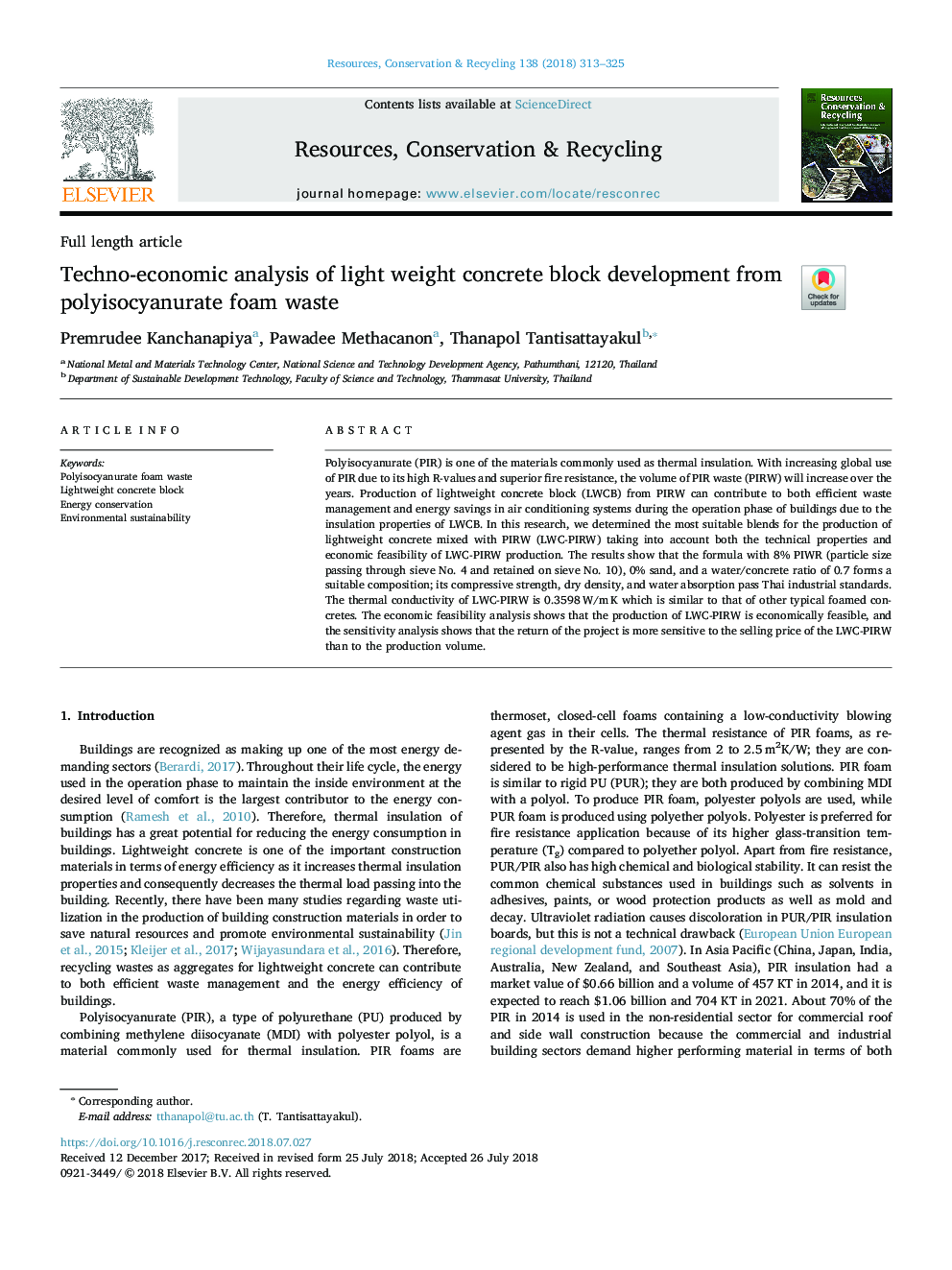| Article ID | Journal | Published Year | Pages | File Type |
|---|---|---|---|---|
| 11005435 | Resources, Conservation and Recycling | 2018 | 13 Pages |
Abstract
Polyisocyanurate (PIR) is one of the materials commonly used as thermal insulation. With increasing global use of PIR due to its high R-values and superior fire resistance, the volume of PIR waste (PIRW) will increase over the years. Production of lightweight concrete block (LWCB) from PIRW can contribute to both efficient waste management and energy savings in air conditioning systems during the operation phase of buildings due to the insulation properties of LWCB. In this research, we determined the most suitable blends for the production of lightweight concrete mixed with PIRW (LWC-PIRW) taking into account both the technical properties and economic feasibility of LWC-PIRW production. The results show that the formula with 8% PIWR (particle size passing through sieve No. 4 and retained on sieve No. 10), 0% sand, and a water/concrete ratio of 0.7 forms a suitable composition; its compressive strength, dry density, and water absorption pass Thai industrial standards. The thermal conductivity of LWC-PIRW is 0.3598â¯W/mâ¯K which is similar to that of other typical foamed concretes. The economic feasibility analysis shows that the production of LWC-PIRW is economically feasible, and the sensitivity analysis shows that the return of the project is more sensitive to the selling price of the LWC-PIRW than to the production volume.
Related Topics
Physical Sciences and Engineering
Energy
Renewable Energy, Sustainability and the Environment
Authors
Premrudee Kanchanapiya, Pawadee Methacanon, Thanapol Tantisattayakul,
